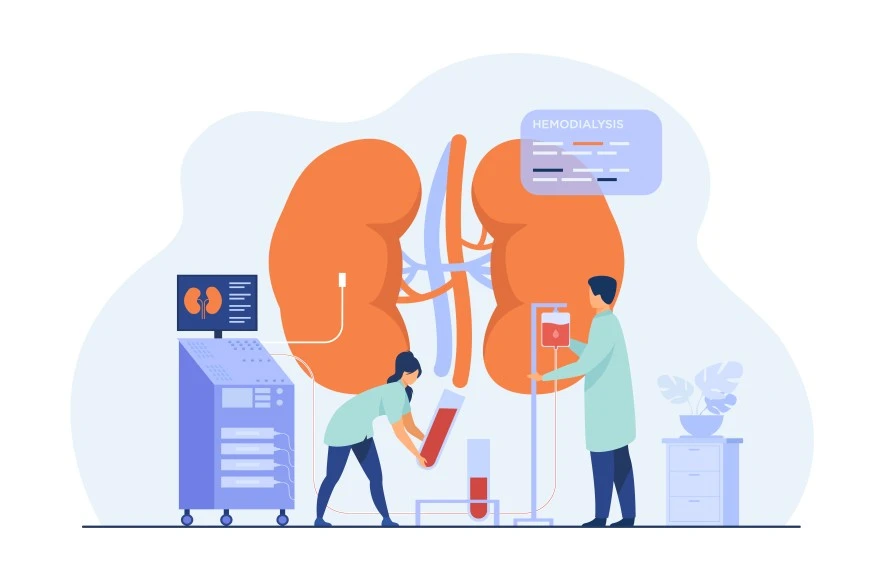Preventive Healthcare
Understanding RDW Blood Test: Normal Range and Interpretation

Table of Contents
- What is an RDW (red blood cell distribution width) blood test?
- What is the difference between an RDW blood test and a complete blood count (CBC)?
- What does an RDW blood test measure?
- When would an RDW blood test be needed?
- How does an RDW blood test work?
- How do I prepare for an RDW blood test?
- What should I expect during an RDW blood test?
- What are the risks of an RDW blood test?
- What type of results can you get and what do the results mean?
- When should I know the results of the test?
- Conclusion
The RDW, or Red Cell Distribution Width, is a crucial component of blood testing that provides valuable insights into your health. This diagnostic parameter measures the variation in the sizes of red blood cells, offering a comprehensive view of potential health issues. Understanding RDW is essential in the context of overall well-being, as deviations from the norm can indicate various conditions, from anaemia to inflammation.
High RDW Symptoms: Elevated RDW levels may be associated with symptoms like fatigue, weakness, and shortness of breath, which can be indicative of underlying health issues requiring further investigation.
In this article, we will discuss what the test entails, the significance of its results and how it contributes to a holistic understanding of one's health.
What is an RDW (red blood cell distribution width) blood test?
The RDW blood test measures the variation in the size of red blood cells (RBCs) in a given blood sample. It indicates how uniform or diverse the RBC sizes are. A higher RDW suggests a greater range in cell sizes, which can be indicative of certain health conditions such as anaemia and vitamin deficiencies. On the other hand, a lower RDW typically indicates more uniform RBC sizes. The RDW blood test helps healthcare professionals assess overall blood health and diagnose underlying medical issues related to red blood cells. The result is interpreted by comparing it to a reference range established by the testing laboratory.
What is the difference between an RDW blood test and a complete blood count (CBC)?
An RDW blood test and a Complete Blood Count (CBC) are related but serve different purposes. The CBC is a comprehensive blood test that assesses various blood components, including red blood cells, white blood cells and platelets. It provides an overall picture of blood health and aids in diagnosing a range of conditions.
On the other hand, the RDW blood test is a specific component of the CBC. It measures the variation in the size of red blood cells (RBCs) in a blood sample. A higher RDW indicates a greater range in RBC sizes, potentially signalling conditions like anaemia. The RDW, therefore, offers insights into the uniformity or diversity of RBC sizes within the blood.
While the CBC offers a broader analysis of blood composition, including RBCs, the RDW focuses specifically on the size distribution of red blood cells, providing additional information about potential issues with RBC uniformity.
What does an RDW blood test measure?
An RDW blood test measures the variation in the size of red blood cells (RBCs) in a blood sample. The test calculates the range of RBC sizes and indicates their uniformity or diversity. A higher RDW value suggests greater variability in RBC size, while a lower value indicates more uniformity. An RDW blood test is crucial in assessing blood health, as deviations in RBC size can signal underlying health conditions, such as anaemia or nutritional deficiencies. Healthcare professionals use the RDW test as part of a complete blood count (CBC) to gain insights into the overall well-being of the blood and identify potential health issues related to red blood cells.
When would an RDW blood test be needed?
An RDW blood test may be needed when a healthcare provider suspects underlying health conditions related to red blood cells (RBCs). Common indications include assessing anaemia, vitamin deficiencies, or chronic diseases affecting blood health. Symptoms such as fatigue, shortness of breath, dizziness and pale skin may prompt a healthcare professional to order an RDW test. Additionally, the test is valuable for monitoring certain medical treatments and gauging the effectiveness of interventions. High RDW levels may signal various conditions, including anaemia, autoimmune disorders and liver or kidney diseases.
Ultimately, the test aids in diagnosing and determining the causes of abnormalities in RBC size, contributing to a comprehensive understanding of a patient's overall health.
How does an RDW blood test work?
An RDW blood test assesses the variation in the size of red blood cells (RBCs). It measures the range of RBC sizes in a blood sample, helping identify potential health issues.
The test is part of a complete blood count (CBC) and is essential for understanding the uniformity or diversity of RBC sizes, aiding in the diagnosis of conditions like anaemia and other blood-related disorders.
How do I prepare for an RDW blood test?
No special preparation is needed for an RDW blood test. Simply follow your healthcare provider's instructions for blood tests.
Generally, there is no requirement for fasting or any specific actions before the RDW test. The blood sample is usually collected without additional preparations on the same day as your appointment.
What should I expect during an RDW blood test?
During an RDW blood test, you can expect a routine blood draw similar to other blood tests. A healthcare professional will clean the area, usually the arm, with an antiseptic, insert a needle to draw a blood sample and collect it in a tube. You might feel a brief pinch or sting during the needle insertion.
After the blood draw, a bandage will be applied to the puncture site. The procedure is generally quick and causes minimal discomfort. Results are typically available after the blood sample is analysed in a laboratory. It's important to note that no special preparation, such as fasting, is required for this test.
What should I expect after an RDW blood test?
After an RDW blood test, expect results indicating the variation in red blood cell size. RDW's normal range means typical cell size, while deviations like high RDW or low RDW may indicate underlying medical conditions.
What are the risks of an RDW blood test?
RDW blood tests are generally safe with minimal risks. Common risks include slight discomfort during blood collection and the rare possibility of infection or bruising at the puncture site. However, these risks are rare and the benefits of the test in diagnosing potential health issues outweigh the minimal drawbacks.
What type of results can you get and what do the results mean?
RDW blood test results indicate the variation in red blood cell (RBC) size, providing valuable insights into potential health issues.
Normal RDW
An RDW normal range suggests consistent RBC sizes, indicating good overall health. However, it's essential to interpret RDW results in conjunction with RDW blood test normal range and other blood tests for a comprehensive assessment. RDW's normal range is approximately 12.2% to 16.1% in adult females and 11.8% to 14.5% in adult males.
High RDW
High red cell distribution width values may indicate increased variability in RBC size, which could suggest various conditions, including anaemia or vitamin deficiencies. Further tests are often necessary to pinpoint the underlying cause.
Low RDW
Low red cell distribution width may be less common but can also signal specific health issues. It may indicate a more uniform RBC size, potentially associated with conditions like chronic inflammation or liver disease. As always, comprehensive evaluation with additional tests is crucial for an accurate diagnosis.
Understanding RDW results in the context of other blood parameters is key to deriving meaningful conclusions about one's health.
When should I know the results of the test?
The turnaround time for RDW blood test results varies. Generally, you can expect to receive them within a few days. However, specific timelines depend on factors such as the testing facility, the complexity of the analysis and whether the results are processed in-house or sent to an external laboratory.
It's advisable to consult with your healthcare provider to get an estimate of when you can anticipate receiving the results. They can provide more accurate information based on the specific circumstances surrounding your test and the healthcare facility's processes
Conclusion
A normal RDW range signifies healthy consistency in red blood cell sizes, while elevated or reduced levels may indicate underlying health conditions such as anaemia or inflammation. It is crucial to interpret RDW blood test results in conjunction with other blood parameters for a comprehensive understanding of one's well-being.
For accurate and timely RDW blood tests and othermedical tests consider Metropolis Labs. With a network of diagnostic labs across India, Metropolis offers at-home blood sample collection by qualified technicians. The results are conveniently accessible online through email or the Metropolis TruHealth app, ensuring a seamless and efficient healthcare experience.





































